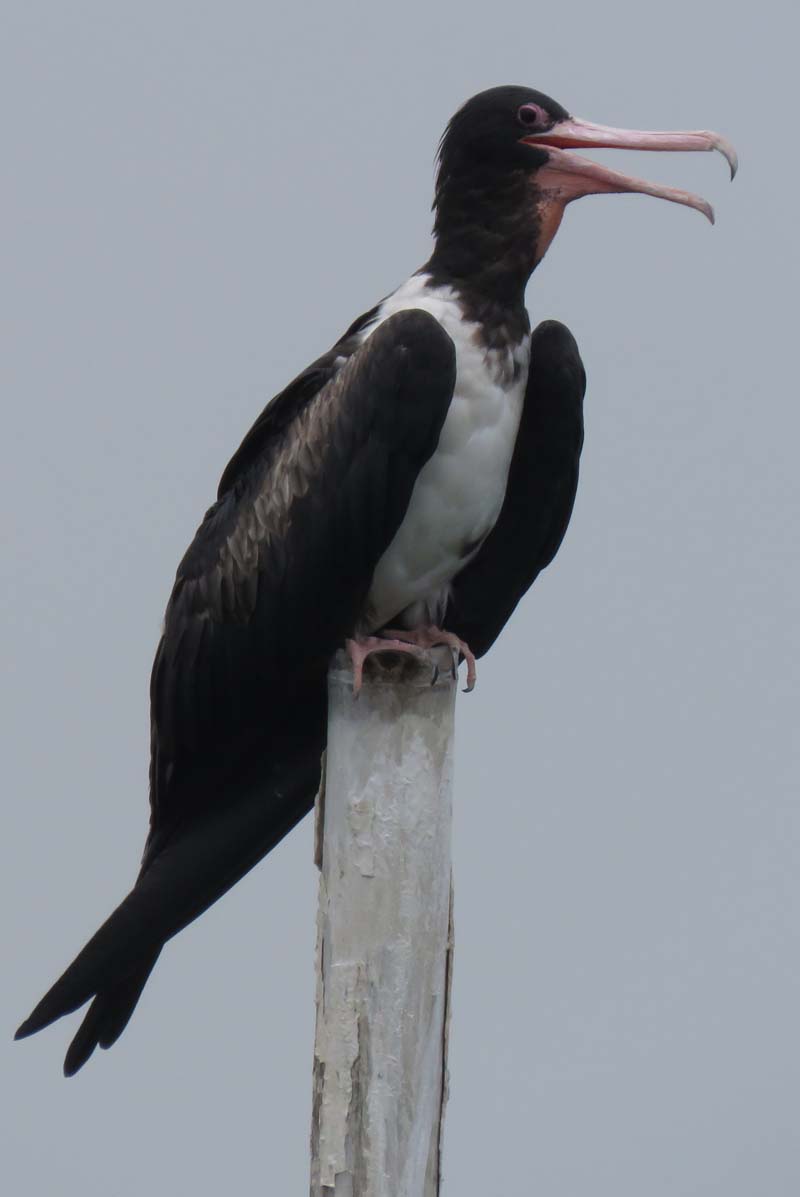Non-breeding performance of Christmas Island Frigatebird
This project – part of a collaboration between CSIRO, Director of National Parks (DNP) and other partners – will design, build and test weight loggers to record the weight of perching seabirds, with the aim of enabling weight changes of different species, and of different sexes within each species, to be measured over time. The focus of the study is the Christmas Island frigatebird, which spends the non-breeding period in heavily populated coastal seas in south-east Asia. Download the Frigatebird logger poster for more information.

Christmas Island Frigatebird
One concern for Christmas Island frigatebird population viability is availability of prey in the non-breeding range, which may in turn influence breeding attempts on Christmas Island. During this time, particularly in Jakarta Bay (Indonesia), they perch on tall bamboo poles, which are part of fishing gear in the region. Birds leave the poles in the morning and return in the evening (though individual birds do not necessarily return to the same pole). During the day there may be opportunistic use of the poles for roosting and social interaction (particularly amongst juveniles). This behaviour offers a unique non-invasive sampling opportunity to investigate prey availability and foraging success of Christmas Island frigatebirds, by recording the weight of individual birds when they land on the fishing poles and using these data to examine the range of and changes in weight over time (daily, seasonal, and annual) at a population level. Testing this approach in Jakarta Bay also offers opportunities to collect information on two other frigatebirds that are present in the area (great and lesser frigatebirds). Depending on the results of the trial, the method has the potential to be extended, with possible modifications, to studies of the same or other seabird species in other locations.
For further information, contact Alistair Hobday
